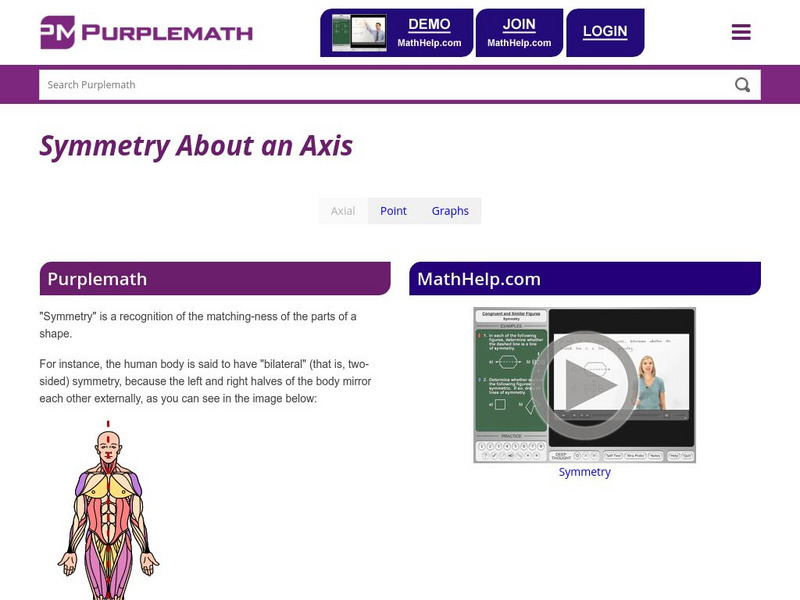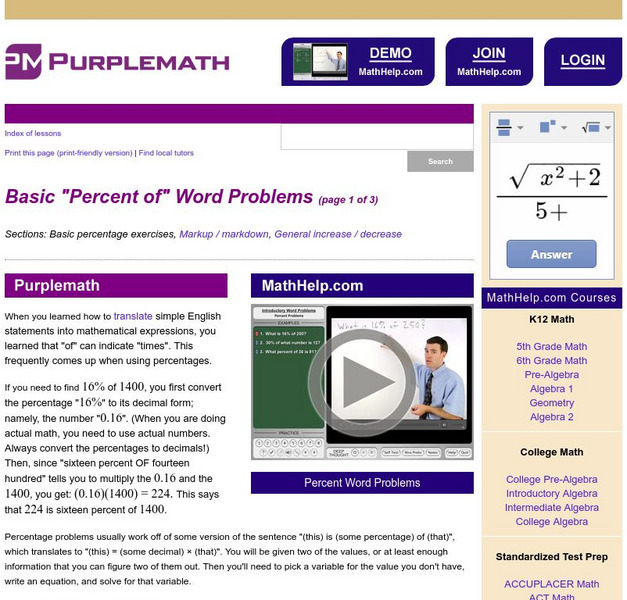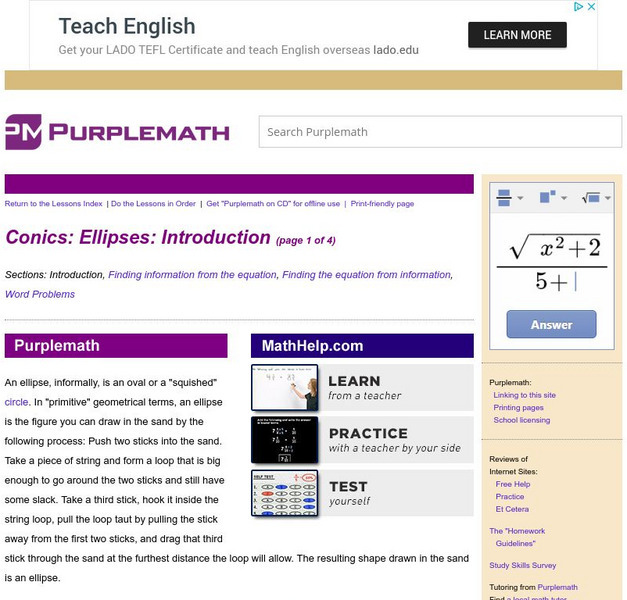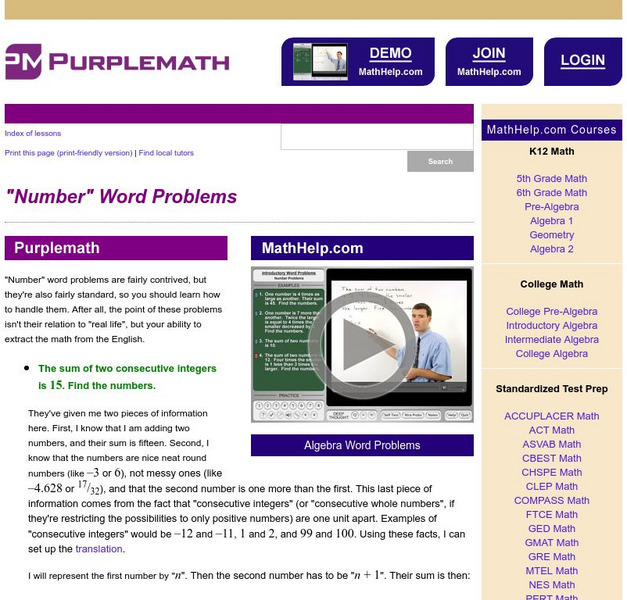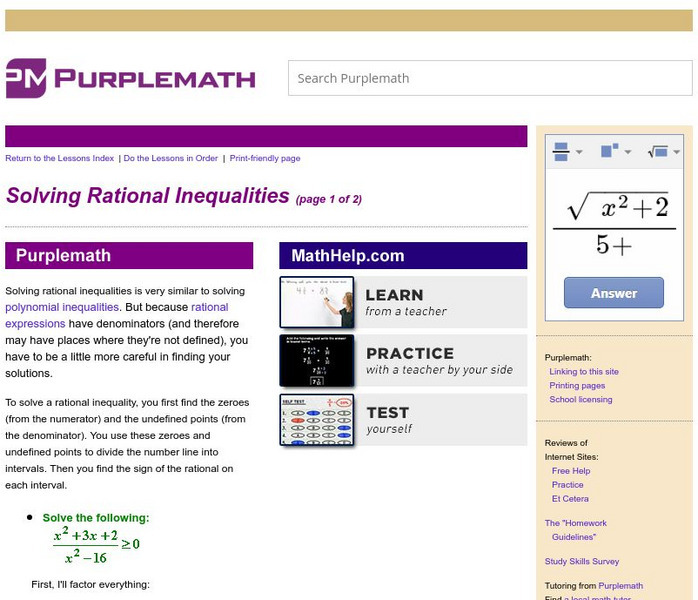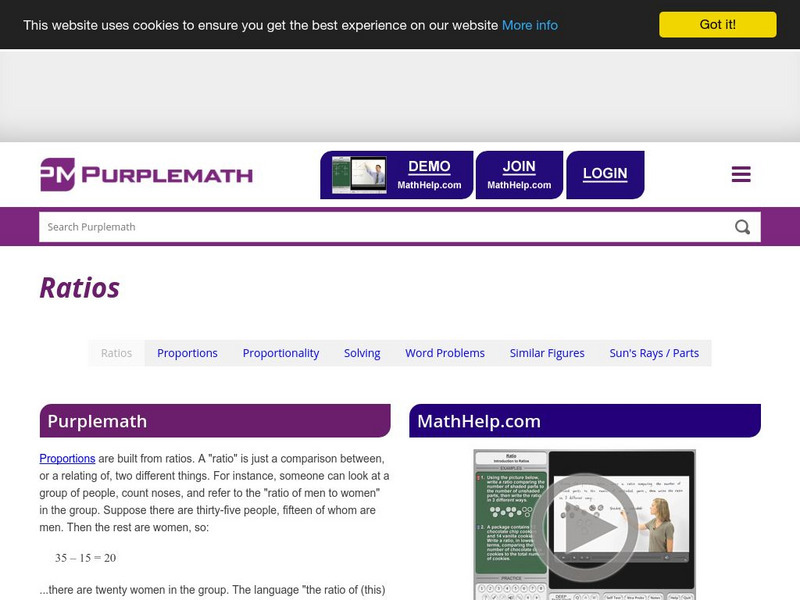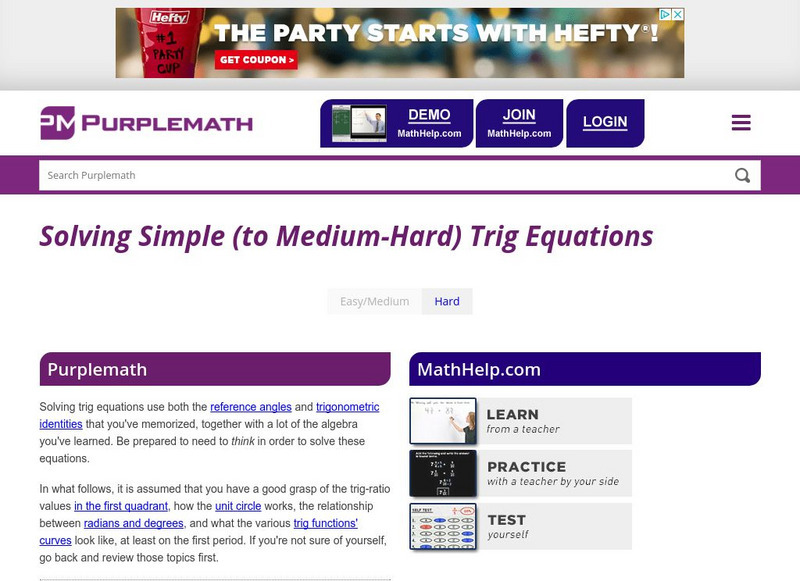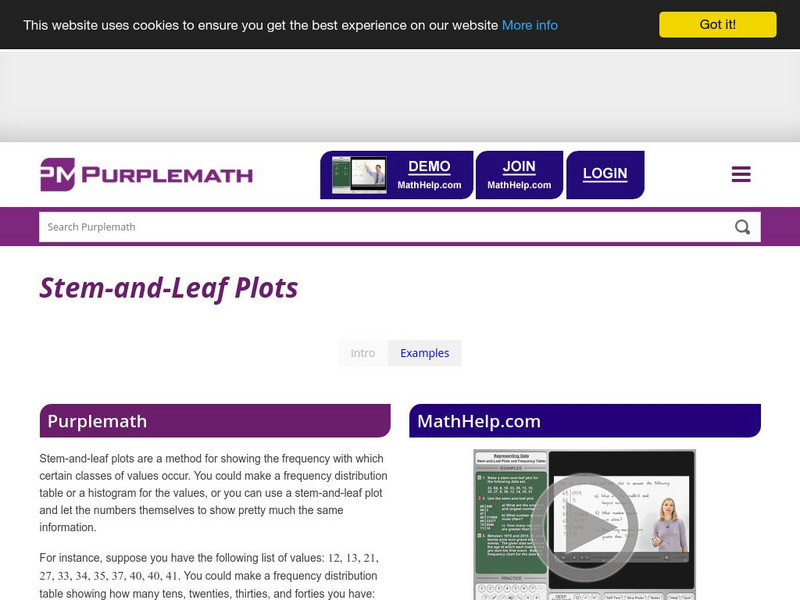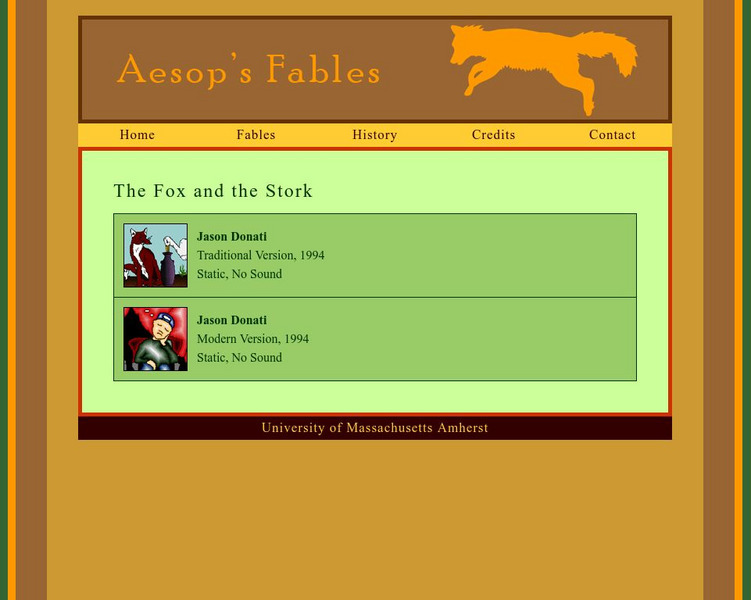Meadowbrook Press
Giggle Poetry: "A Lesson Learned" Poetry Theater: A Poem in Two Voices
In "A Lesson Learned", students will participate in a poem in two voices. Adapted from the poem by Bruce Lansky in My Dog Ate My Homework! and If Pigs Could Fly, And Other Deep Thoughts, students will dramatize a poem about a skydiver...
Purple Math
Purplemath: Symmetry About an Axis
Explains symmetry about a line, using animations to illustrate the "rotation" or "reflection" involved in this type of symmetry.
Purple Math
Purplemath: Systems of Linear Equations: Definitions
Covers the basic definitions involved in systems of linear equations.
Purple Math
Purplemath: Basic "Percent Of" Word Problems
Demonstrates how to set up and solve 'percent of' word problems such as 'What percent of 16 is 5?'.
Purple Math
Purplemath: "Coin" Word Problems
This site demonstrates how to solve 'coin' word problems, given relationships between the types of coins.
Purple Math
Purplemath: Conics: Ellipses: Introduction
Introduces the basic terms, variables, and equations for ellipses, and discusses their physical properties.
Purple Math
Purplemath: Adding and Subtracting Matrices
Demonstrates how to add and subtract matrices, explains why the addition or subtraction sometimes can't be done, and gives an example of how matrix addition is used in homework problems.
Purple Math
Purplemath: "The Bible Says Pi = 3"
Shows how a simple reading from the Bible proves that the Judeo-Christian value of 'pi' is about 3.14 and not 3.
Purple Math
Purplemath: "Number" Word Problems
Demonstrates, step-by-step and with illustrations, how to set up and solve 'number' problems.
Purple Math
Purplemath: "Work" Word Problems
Explains the "trick" to "work" word problems (such as two people painting a room, or two pipes filling a tank), and demonstrates how to set up and solve these exercises.
Purple Math
Purplemath: "Investment" Word Problems
Demonstrates in a systematic way how to set up and solve 'investment' word problems.
Purple Math
Purplemath: Solving Polynomial Inequalities
Demonstrates the 'factor table' method for solving polynomial inequalities.
Purple Math
Purplemath: Solving Rational Inequalities
Demonstrates the factor-table method for solving rational inequalities.
Purple Math
Purplemath: Quartiles, Boxes, and Whiskers
Explains how to construct a simple box-and-whisker plot, and demonstrates the steps. Discusses quartiles and medians, shows how to find them, and explains how they relate to box-and-whisker plots.
Purple Math
Purplemath: Ratios
Explains the basic terminology and formatting of ratios, and demonstrates how to solve typical exercises.
Purple Math
Purplemath: Solving Simple (To Medium Hard) Trig Equations
Introduces techniques for solving trigonometric equations. Provides worked examples of solving some simpler to medium-hard equations.
Purple Math
Purplemath: Stem and Leaf Plots
Explains how to create a stem-and-leaf plot from a data set. Demonstrates how to format a clear stem-and-leaf plot.
University of Massachusetts
University of Massachusetts: Aesop's Fables: "The Fox and the Grapes"
Two traditional retellings of Aesop's fable "The Fox and the Grapes." The first has literal illustrations of the original fable. The second tells the same story, but has illustrations that give the story a modern setting and characters...
University of Massachusetts
University of Massachusetts: Aesop's Fables: "The Fox and the Stork"
Read two versions of Aesop's fable "The Fox and the Story." Both versions have the same text, but one has traditional illustrations while the other provides a modern interpretation through the illustrations.
University of Massachusetts
University of Massachusetts: Aesop's Fables: "The Frog and the Ox"
Students can learn a lesson about how being overly concerned with yourself can lead to negative consequences by reading Aesop's fable "The Frog and the Ox." The first version provides literal illustrations for the fable, while the second...
University of Massachusetts
University of Massachusetts: Aesop's Fables: "The Frogs Desiring a King"
Two versions of Aesop's Fable with the same story, but different illustrations. The first provides literal illustrations of the story, while the second provides a more modern interpretation.
Science and Mathematics Initiative for Learning Enhancement (SMILE)
Smile: Chemistry Is Crystal Clear
From the Science and Mathematics Initiative for Learning Enhancement (SMILE) program. A lesson plan analyze crystal samples and generalize about the six basic shapes of crystals. The formation of crystals is illustrated through various...
Science and Mathematics Initiative for Learning Enhancement (SMILE)
Smile: Popcorn Is a Gas
From the Science and Mathematics Initiative for Learning Enhancement (SMILE) program. A lesson plan in which students explore the pressure-temperature-volume relationships by performing a popcorn lab investigation. Intriguing. Great...
Science and Mathematics Initiative for Learning Enhancement (SMILE)
Smile: Relationships: Pressure, Volume, and Temperature
From the Science and Mathematics Initiative for Learning Enhancement (SMILE) program. A lesson plan that centers around a lab investigating the gas laws of Boyle, Charles, and Gay-Lussac. Data is collected, analyzed and discussed.



